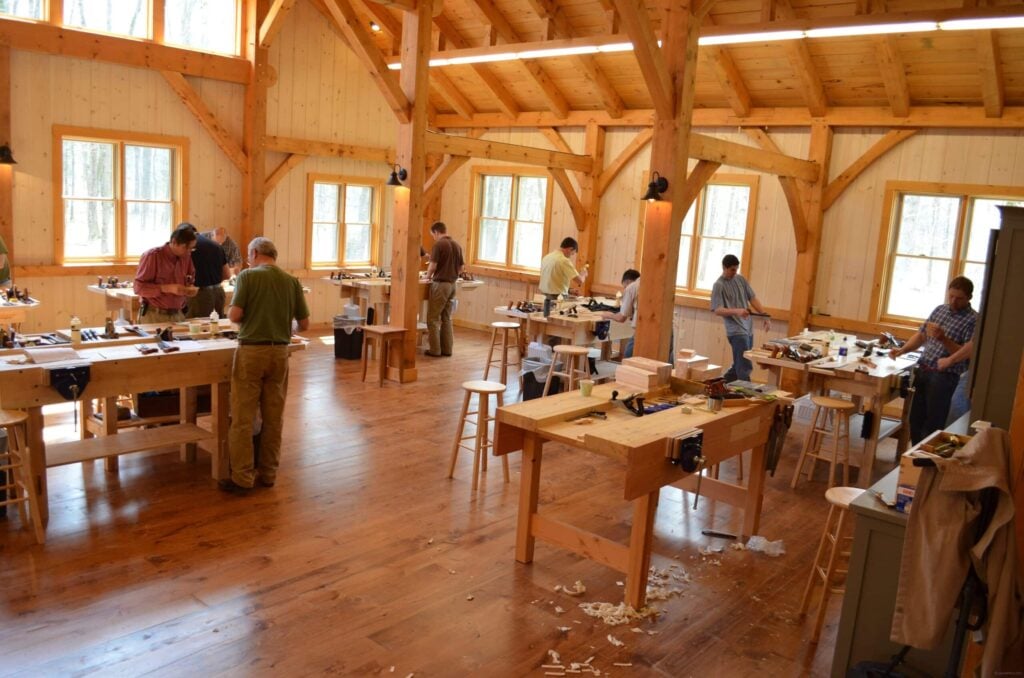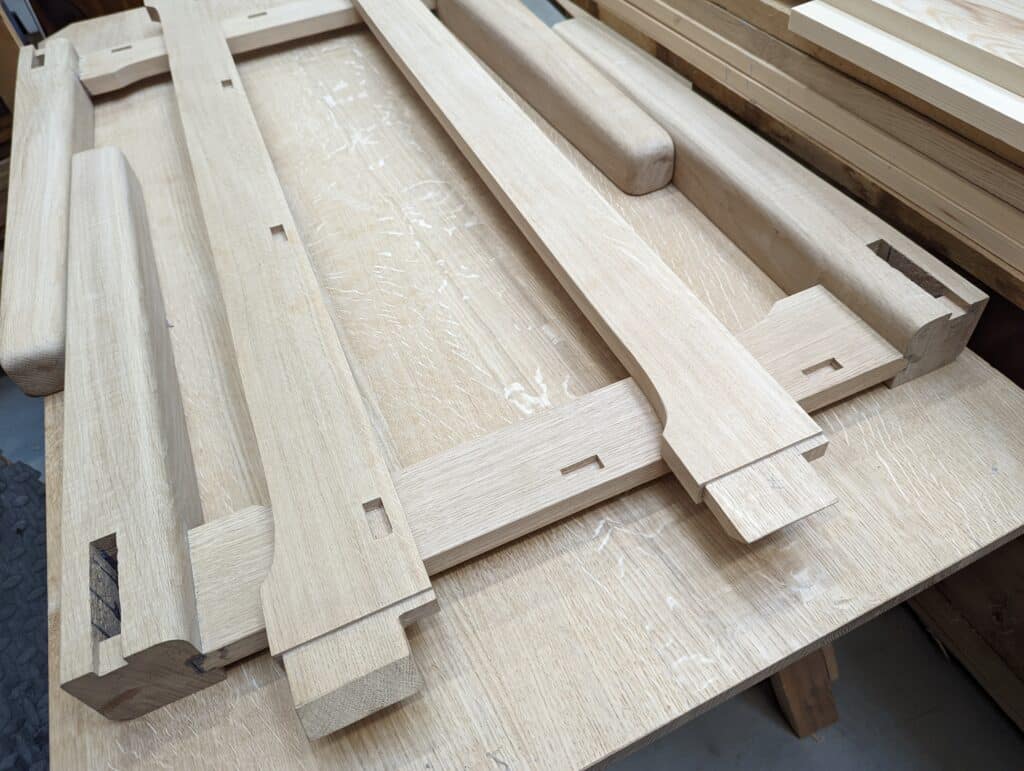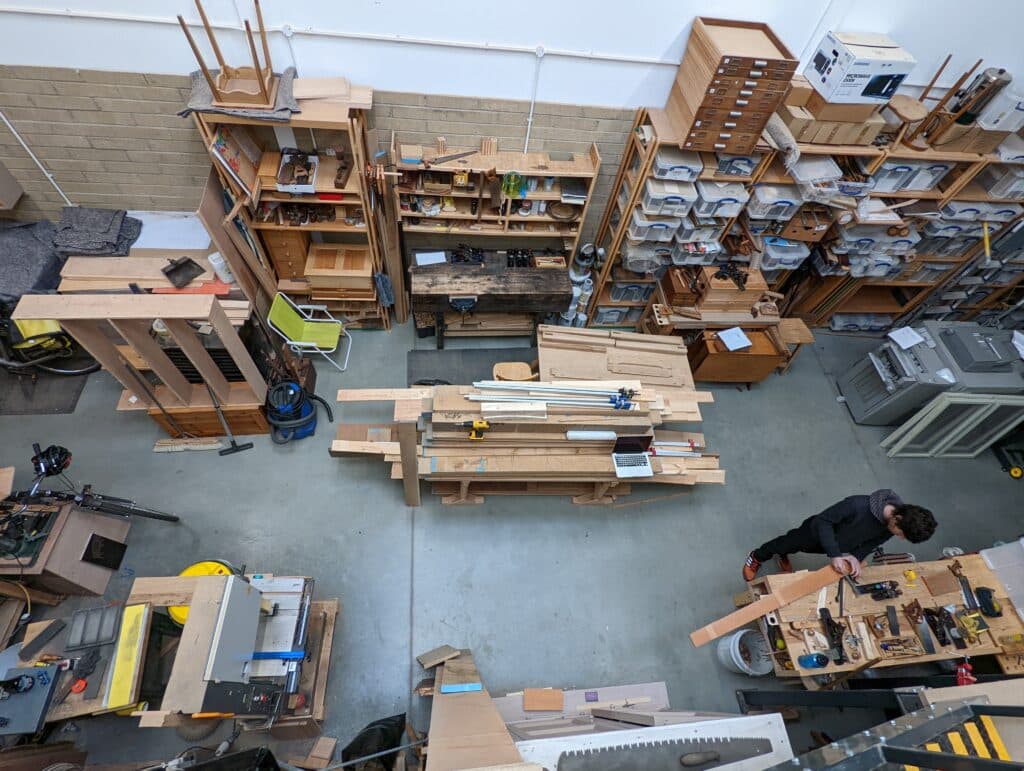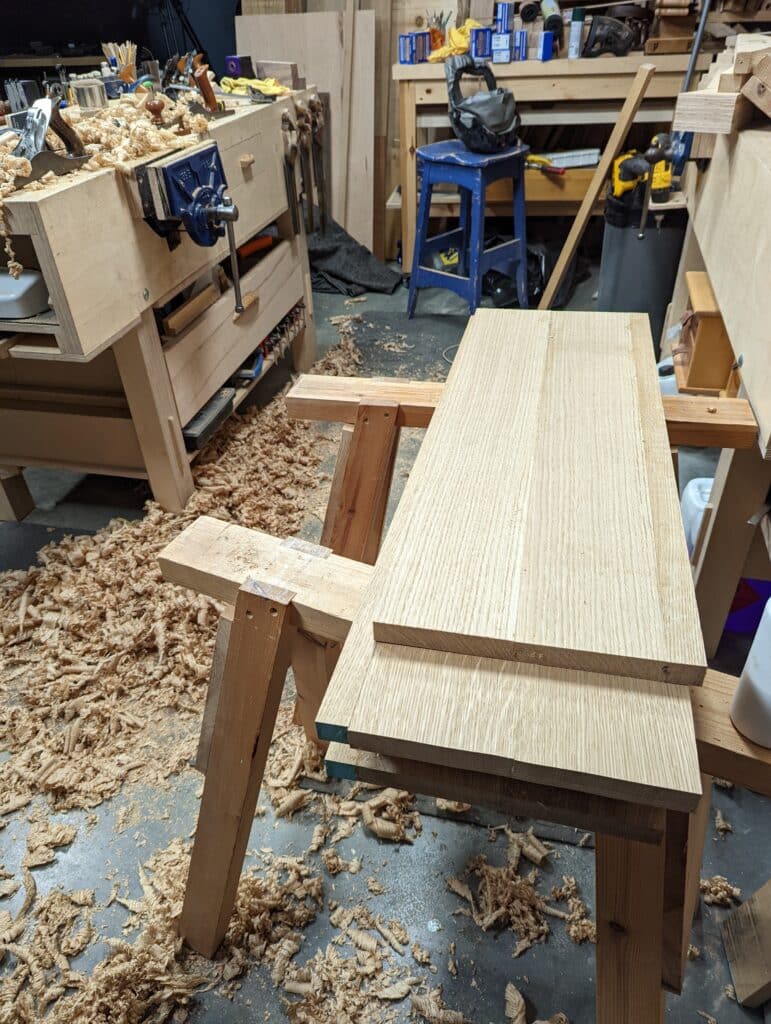Styling your Life

Some things are worth considering more deeply simply because of the way we live and what we do in it In my day, nature seems always to blend seamlessly with my making. From making my breakfast, my more recent (since covid) dropping in to a cafe for a cafe coffee and on then to making at the workbench, I like cafe white-noise. It helps me think. In the cafe, I write, synchronise my thinking by arranging some of the first of my forethoughts in every way I care to imagine and otherwise answering life’s questions around woodworking and working wood. It’s how I best process things, I suppose. By nature, I’m something of a planner but always take care never to choke out life by strangulating with plans. Spontaneity is a big, big part of creativity for me. I can allow creativity a longer leash from time to time but only because I am so highly self-disciplined and always have been. If you are young and think you have some kind of license to be a more, well, free and deserving spirit, I doubt that you will ever produce too much of anything of real worth. Without a plan, you never do. Just an observation I make. Creativity does take structure whether we want to admit it or not. Think Da Vinci, Isambard Brunnel and then ~~Leonard Bailey and his Bailey-pattern planes, Charles Babbage and the computer you and I are working from, and then, of course, the worldwide web, the good and bad of it, came from the ingenious Tim Berners Lee. Imagine the developments from the early 1830s Charles Babbage came up with the first automatic digital computer and where we are today. Completely lost!. Funny thing about Leonard Bailey’s bench plane designs is that no one came up with anything as effective or efficient since. It is just about the most brilliant contribution to the woodworking world yet no one says it anywhere (except me, I think). Okay, enough! But here is a last thought to dwell on: as far as woodworking hand tools are concerned, there has been no new hand tool invention in 300 years. Yes, we have adaptations and some innovations to what existed but there is nothing particularly new under the sun and so little improvement. W`hy? Because they worked!

Taking into consideration that throughout my life self-discipline has always been essential, bosses and mentors expected that of me once I reached about fifteen years of age and so did my parents. I was trained to it and by it and I have more lately considered what I would want had I the freedom to choose. This is what it looks like to me. My ideal (substitute idyllic) world for me would still be a woodworking workshop, a second creative area for other crafts like metalwork, art, stitching crafts, leatherwork, etc with an openable, multifold end-wall no bigger than my garage workshop and overlooking a 10-acre pond with reeds, trees and woodlands behind and before me. I’d have enough land for a two-acre garden for my fresh vegetables and chickens for eggs. I’d like a couple more workbenches and spaces for my friends, children and grandchildren to join me if they wanted to. This is a dream. Not reality. Other dreams drift in and out too. In equal measure, I would be at home on a Greek island with its villages of narrow stone streets and archaic stone walls three feet thick. France once had an appeal but our tastes change don’t they? Texas still features high on my list of preferred places to live but that ship sailed and was a wonderful trip. Mostly life and lifestyle is about where you feel you want to invest the remainder of your life, somewhere where you feel welcomed and warmed by hospitality be that from nature, people, culture and whatever rings the right bells for you.

OK. I’ve painted a picture for you. Making is never so much the issue when you are a maker by nature and not everyone is. Fact is some people make only for money and some people make only because they have to but not only or should I say merely for money. The latter is me. I’d make if I got paid or not, nothing and no one would stop me, but, whereas selling is usually important, it need not be the be-all and end-all of why we do what we do. If you find yourself aching to make every minute of spare time you can give to it then it is likely you are inherently a maker needing to do other work to make your living. If the game was changed you would most likely be like me and enjoy making whether you got paid or not but would do what it takes to survive and provide for your family. Needing to sell is a force we makers rarely want to reckon with but reckon with we must. I have known good makers who actually hated making but made because in their minds they could make what they really liked making which was money. For us it is different; truth for us is making has become our passion, not selling! In my small sphere of nature and woodworking, cooking breakfast first thing to set my clock and feed the beast are integrally woven within. This is lifestyle! Lifestyle is generally an indivisible mix of important elements, unfractured, all-cohesive, and lived. For those of who made the decision, we must engineer a lifestyle we want by thinking through what we want to include in it. It can be anything and everything from family to hobbies to cafe cultures, spaces to grow in where we eat, think, drink, rest, exchange views, write and associate. There is too much in life to tug and pull you and life apart and the allocation of time can be highly demanding.

It’s important to consider all of the angles. If you are married, have children, then the priority will indeed be earning a living that provides for this. I managed life as a family man on a single-income wage which came as the shared effort of two adults in a woodworking business. I made everything from birdhouses and feeders to walking canes and staffs and the too pieces for the museum in the White House and the permanent Collection in the Cabinet Room. To see that my craft was passed on I apprenticed many apprentices too, some good experiences and some not so great. In other words, I did what it takes. When we decided to train woodworkers online we decided no sponsorships, non-machine woodworking using honest output, honest tools and honest wood. This was part of my quest to simply present honest and real woodworking. Looking back on the last 30 years of teaching and making side by side, yes I still made to sell and taught evenings and weekends for two decades too, I would do exactly the same again. The best teaching will always come from practiced artisans with a strong work ethic of making and selling. Was this easy? No! Shutting up shop at 6 pm, eating at 6.30 pm and getting back in the shop for a classful of 20 seven to ten-year-olds until 10 pm was hard work three nights a week but it was my choice and many of those kids went on to become full-time makers in their own right. Today we are currently training over 1.5 million woodworkers every month, probably many more. It has become the extension of my New Legacy School of Woodworking Joseph and I began back in 2010 when we taught hands-on classes here in the UK and in the USA. At that time, just after completing the White House pieces in time for President Obama’s Inauguration, I traveled between the US and the UK, traveling and teaching on two continents. At that time I was in my early sixties and I became ever conscious that what I had learned was mostly not as an apprentice but through my fifty years in the saddle. What I knew would be lost if I didn’t start writing it down and so I wrote for magazines. Then the internet gained ground via YouTube, and social media. I could now film my own work, have a website and such. Hence woodworkingmasterclasses.com. What about commonwoodworking.com for beginners using hand tools and wanting the basics? This all grew from intent. My lifestyle was indeed engineered, but it became more a self-building entity through the desire to pass it on and pay it forward. Wow!

My workshop is the simplest ever. A garage-sized workspace that I have grown all the more love very much. You’ve seen how much I make in a couple of square meters of space, everything from rocking chairs to dining tables and sets of six chairs too.



How do you find the time to do any of your work with wood. I’ve just spent the last half hour reading this article, and only got as far as the picture of the west wing, I’ll have to try and get back to it later on, time willing.
That picture at the beginning of this article, for me is to die for, the nearest I ever got to any thing remotely like it, was at a local college, in the evening, which was cancelled, as it wasn’t considered to be leading to a qualification.
As much as I would like to sit and write on. Time dictates I’ve other jobs to do.
Kindest regards Geoff Maddison
I aim for 1,500 words a day and on average that’s what io get. I write for two hours in the morning and then on and off throughout the day if and when something hits me and I come to a natural break in my work.
Paul, you touch about design and not to build until you have a design written down. So often I have an idea for a piece of furniture or some other thing without sketching it out first, it’s all in my head, the dimensions and proportions, I sometimes add things as I go along. Is this a wrong attitude to have, am I heading for disappointment in the long term or is it acceptable to do this. Have you ever worked like this? Would love to know your views on this. I love woodworking by hand and do not do it for the money, so I totally get where your coming from. It’s a vocation for me just like it is for you. Love your blogs, long may they continue.
Yes, I too worked like that for a long time but that was when there was only me. Then I shared a workshop with others and everything had to change. I had to convey my designs for inclusivity, communication with staff and customers, planning and so on. I discovered that this demanded a much higher level of self-discipline of me because I expected this from others. The benefits far outweigh any cost to me and I just continued to do it. I think though that the greatest benefit is that I very often spot potential problems early on before any cuts are actually made in the wood. Predicting potential problems ahead saves time and money. It is also worth noting that when you make a scale drawing you can predetermine exact sizes for all components and thereby create an accurate cutting list to cut to.
I like to think of myself as one of your apprentices at the moment, although as you say, the demands of making a living limit this to weekends. I hope to complete the apprenticeship more rapidly when I retire in a couple of years.
Don’t think when you retire you have all the time ine the world- that’s a joke and a misnomer, unless your a non doer who twiddles your thumbs and biggest part of your day is going out to cotails and dinner.
Being retire take a lot of dislike if not more than when you were working, why you need goals to drive too.
Wood working also is not as easy as one think either. We are just seeing the tip of the iceberg when we watch paul. Like any thing it take time to learn the art of the work your doing and to master it. Goid luck if you think your going to master it sooner – lol
What a lovely dream, with the pond and the workshop. I have something similar.
“Fact is some people make only for money and some people make only because they have to but not only or should I say merely for money.”
That highlights a fundamental flaw in our economic system. That making for money only can be more financially rewarding than making for love of it, shows a deep skew towards greed – like the system is designed to reward greed. It is a man made decision to create a system that drives the majority away from their passions. An inefficiency that disconnects us from reality into the game of making money in itself. What a silly system that takes the tool of money and converts it into the meaning and goal in and of itself. Not very enlightened of us!
I believe it was the French who factored disposability into design to make people discard something that was still worthy of use and built with a quality of continued longevity so that consumerism would progress higher income and not fair wear and tear. Building in obsolescence hadn’t existed until a certain point of fashionability, be that through peer pressure or a dissatisfaction by boredom of an item, created a preference to replace and displace need.
Lovely article and great pictures. I like that you include a lot of your personal philosophy in your woodworking writing and actions. As an hobby woodworker, I can’t do the sort of productivity you do, but the shop does help me relax at times after a hard day of “regular” work.
Thanks for everything, and I love the book
Paul,
I have been following your You Tube and Masterclass posts as well as the blog for a few years. I understand everything you are saying and fully agree with it, however, having a parent that was an exceptional craftsman and taught American High School Woodworking for many years I did learn from him there are many options to get to an excellent end result. I have in the last 40 plus years noticed that much of my education in woodworking was lacking (not because of those teaching), but due to the system’s bias for teaching a more traditional type of course. I will admit that a submission of yours to a magazine was interesting to the point that I built a small number of pieces of furniture and casework without power tools which lead me to discover the major failure of my educators. The never taught me how to sharpen anything and it took me quite a bit of time to teach myself that skill and it has indeed made a great deal of difference in how I am able to work. Since I am slightly older than you, I wanted to let you know that a discourse such as this is something I have never done before and I appreciate your candid and thoughtful interest is passing on a lifetime of learning.
Yes our educational system is failing use more each year as a whole! Most are politicians at work in a union system.
They’ll showed you how to cut wood, but not how to maintain your tools which to me was the first I tought my self when I started woodworking at 60! Bought a cheap China chisle, and sharpen it free hand till it was scary sharp. Then a block plane, then other tools. I didn’t build bird house, no I tought myself how to sharpen a tool first. Ps Paul’s, beloved Aldi chisle are just made in china chisles. They are good over all and mine for pairing is equal to any! Lot of wood working is personal preference and personalities! Some are humble some are not!
I’d like to think that one day we would stop using the term “scary sharp” giving it more credibility than it deserves, as though the perpetrator had invented something unique and more than it was and that was plain ordinary sharpening. I know, you’ve got to sell the magazine it was first published in and then too a system but the Egyptians had the sharpest tools 5,000 years ago going off some of their handcrafted items that could not be accomplished without it. With regards to “Paul’s beloved Aldi chisels” not sure why you said it that way, bit disparaging, but we can pass on that, the Aldi chisels were made in Germany not China and the ones I have are as good as it gets.
As to schools teaching crafts, the teachers currently could never teach crafts as they were and are likely to be teaching maths and English language along with (here in the UK at least) religious studies and Physical Education. Secondary education is just about the very worst environment now to teach woodworking. Better to stick to providing a continuous source of labour for industry needs and mass production be that whatever industry you care to name from sport and leisure to pharmaceuticals, imports and exports of goods or politicians incapable of really getting much beyond their own agendas and that has been looking worse and worse year on year. I’m thankful that my educational system failed me when it did and told my parents `i could never be educated otherwise `i too might have been more fodder for industry. As it is, through the canings and the constant fear of it I eventually left school early and my dad helped find a job in something I still love.
Good Morning MR. Sellers.
Planning things, mmm, I had a need to make an internal door to fit in the partition between my working space and the car. Problem, no wood! This was solved when 3 pallets of logs were delivered, use the planks from the pallets; that was enough exercise for one day believe me. Logs stacked and pallets dismantled and stored in the dry. The pallet wood was a challenge, some responded well to the plane whilst many were a nightmare. The stiles and rails were laminated to show the “best” side and the rest were book end planed and glued up to make the rest of the door(wish that I had watched your video on mortising before chopping away). Filling the many nail holes was challenging, would I plan to do it this way again? no! but between the fun and the frustration I got what I wanted and, learnt a lot, can’t be a bad thing can it?
Not sure just where in the universe you reside, but here in the US, the best pallets are the 40″x48″ four way oak ones that food is shipped palletized on. If you live anywhere near where there are food distribution warehouses, the’ll be a recycled/used pallet yard selling different kinds. The ones I mentioned will be the most expensive, but worth it ones.
P.S.: “Four way” means it’s designed so a forklift is able to approach it from either end or side, insert the forks and be able to lift it safely.
Thanks to you, Paul, I was able to reconnect with my maker nature that I had long lost during high school. As we prepared for college, our guidance counsellor informed me that my parents expected me to have a “real” career, not that of a woodworker. When I attended several of yours and Frank Strazza’s courses in Elm Mott, Texas, I began my “lifestyle” adjustments that have resulted in a remodel of our home that includes a new workshop this summer. The past year away from my workshop during construction has confirmed our decision is correct for us, and of course endorsed and afforded by my wife. Keep up all your videos for this generation and the archives to come.